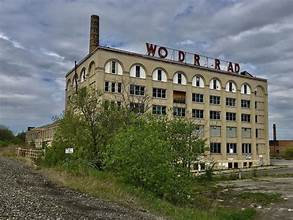
Abandoned sites, from crumbling factories to deserted towns, offer a unique glimpse into the past. These forgotten places, often shrouded in mystery and decay, serve as poignant reminders of bygone eras. In this article, we’ll delve into the history of abandoned sites and explore what they reveal about the times and cultures that once thrived there.
1. The Allure of Abandoned Sites
Abandoned sites captivate the imagination with their eerie beauty and sense of nostalgia. The overgrown vegetation, derelict structures, and haunting silence create an atmosphere of melancholy that invites exploration. This allure is not just aesthetic but also historical, as these sites hold untold stories of their past inhabitants.
2. Historical Insights from Abandoned Factories
Factories and industrial sites, once bustling with activity, provide a tangible connection to the industrial revolution and economic shifts. For example, the abandoned factories of Detroit tell the story of the rise and fall of the American automobile industry. The empty assembly lines and rusting machinery are relics of a time when Detroit was a thriving industrial hub. These sites reveal the impact of economic downturns, technological changes, and shifts in manufacturing practices.
3. Ghost Towns: Echoes of Past Communities
Ghost towns, whether in the American West or elsewhere, offer insights into the demographic and economic trends of their time. The empty streets and dilapidated buildings of these towns speak to the boom-and-bust cycles of mining, agriculture, or other industries that once attracted settlers. For instance, the ghost town of Bodie, California, once a bustling gold mining community, now stands as a preserved snapshot of 19th-century frontier life. Studying these towns helps us understand migration patterns, economic opportunities, and societal changes.
4. Abandoned Schools and Hospitals: Reflections of Social Changes
Abandoned schools and hospitals can shed light on changes in educational and medical practices. These sites, often left to decay, reflect shifts in population, advancements in technology, and changes in social attitudes. The transformation of once-prominent institutions into ruins highlights how societal needs and priorities evolve. For example, abandoned psychiatric hospitals often reveal historical attitudes toward mental health and the evolution of treatment methods.
5. Military Sites: Traces of Conflict and Strategy
Military installations, from old forts to abandoned airfields, offer a window into historical conflicts and military strategies. The remnants of these sites tell stories of wars fought, strategies developed, and the lives of soldiers who served there. The abandoned World War II bunkers in Europe, for instance, serve as tangible reminders of wartime fortifications and the strategic importance of certain locations.
6. Urban Exploration: A Modern Perspective on History
Urban exploration, or “urbex,” involves exploring abandoned and often off-limits sites. This practice has gained popularity in recent years, providing a modern perspective on historical sites. Urbex enthusiasts document their findings through photography and writing, bringing attention to the historical significance of these places. This contemporary approach helps preserve and share the stories of abandoned sites, often leading to renewed interest and historical research.
7. Preservation and Conservation Efforts
As abandoned sites gain recognition for their historical value, efforts to preserve and conserve them have increased. Organizations and local governments are working to protect these sites from further decay and to interpret their history for public education. Preservation efforts ensure that future generations can learn from and appreciate the historical significance of these places.
8. Challenges and Controversies
Preserving abandoned sites comes with its challenges. Issues such as funding, safety, and balancing preservation with redevelopment can complicate conservation efforts. Additionally, the debate over whether to preserve, restore, or demolish these sites often involves conflicting interests and perspectives.
9. Conclusion: The Legacy of Abandoned Sites
Abandoned sites are more than just remnants of the past; they are rich sources of historical information and cultural reflection. By exploring these sites, we gain insights into the economic, social, and technological changes that have shaped our world. Whether through the desolate corridors of old factories or the silent streets of ghost towns, abandoned sites reveal the stories of those who came before us, offering valuable lessons for the present and future.



